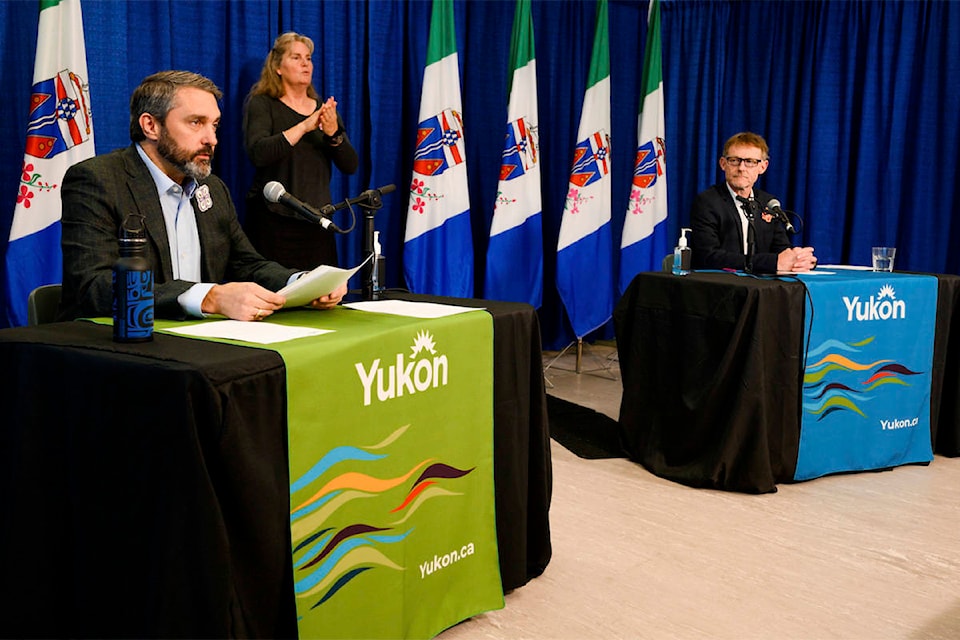The Yukon government said the COVID-19 risk is now manageable enough to allow indoor visits to long-term care homes, but no changes are coming to current border restrictions.
“We have come so far, and I am so very proud of the incredible efforts that Yukoners have made to keep this territory safe,” Premier Sandy Silver said at the weekly update on Aug. 19.
“The fact that we are able to open schools shows just how well Yukon is doing,” he said, thanking all those involved in the back to school process.
Long-term care homes across the Yukon will now allow indoor visits, but only two people per resident can be designated as visitors and visits must be booked in advance. There are no age restrictions on the visitors.
“This has been a long haul for both residents and family members, but we have kept COVID-19 out of our long-term care facilities and we have kept our residents safe,” Chief Medical Officer of Health Dr. Brendan Hanley said.
Screening, masks and hand sanitizer requirements will all be enforced during visits.
Contract tracing and testing related to the Aug. 7 positive case has now concluded, and all 15 positive Yukon cases since the pandemic began have recovered without hospitalizations. In the past week, 134 people have been tested.
The government will continue to hold weekly press conference updates, but Hanley said individual press conferences will not be held for new positive cases in the future. Timely press releases and public announcements will continue.
Hanley said although he is watching rising case numbers in British Columbia and Alberta, the border will remain open to visitors within the current bubble.
“Most of the cases in B.C. are still traceable,” said Hanley. “We have managed over six weeks in the B.C. bubble during which we have had only one new case of COVID-19 in Yukon. More importantly, we have not had any outbreaks or even clusters of COVID. We remain well within our capacity to manage this.
“However, with school reopening this week, and with settling into another school and fall season, combined with increased COVID activity in a number of areas around Canada, I feel we are not ready to lift further quarantine measures as yet. We will stay where we are for now,” Hanley said.
Hanley said although travel is allowed, people must remain mindful of the safe six, where they travel to, how they act and who they visit in order to minimize risk.
“Traveling out from Yukon to B.C. is a privilege,” Hanley said. “A trip to Kelowna or Vancouver is not an excuse to forget everything we have been trying to learn over the past many months.”
Since April 29, enforcement staff have stopped just over 34,000 incoming vehicles, according to Silver. Of those, 4,139 are from British Columbia, 188 are residents from Northwest Territories or Nunavut, 8,100 have been non-residents staying from outside the bubble and roughly 15,500 have been non-residents travelling through Yukon.
So far 185 decals have been distributed to people without a territory plate.
Closer to home, he said the Discovery Day weekend prompted many social gatherings that could be a concern if people are not vigilant about COVID-19 risk.
“We are not immune to the potential effects of unsafe gatherings here. It only takes one case of unrecognized COVID among us,” he said.
The government has received 559 COVID-19 complaints, with the majority of calls about failures to self-isolate. So far 15 complaints have come in about oversized gatherings.
Contact Haley Ritchie at haley.ritchie@yukon-news.com
